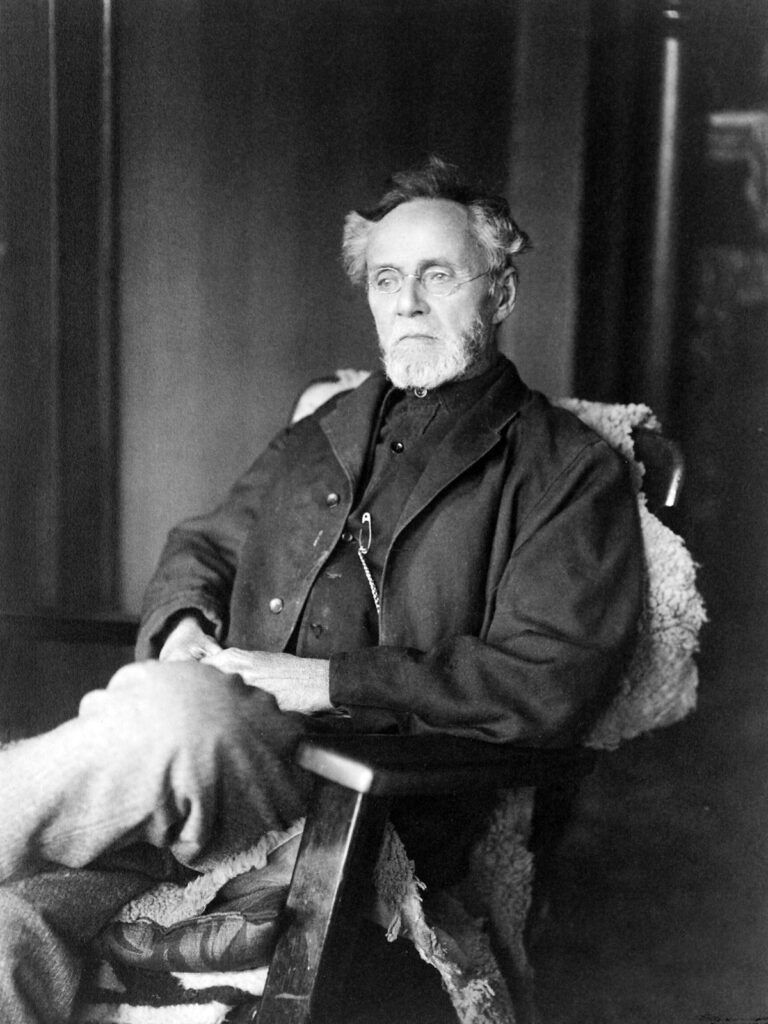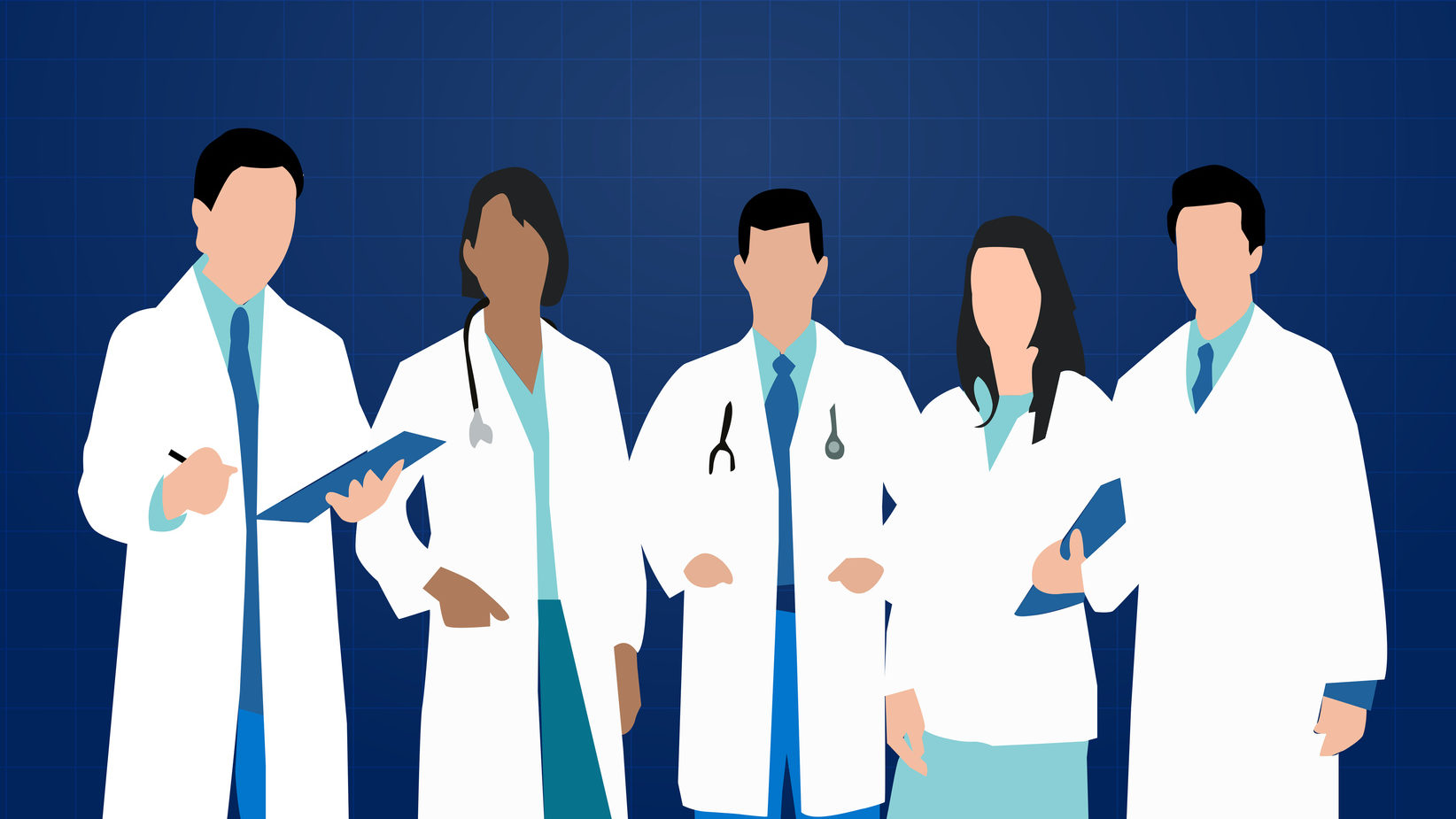Osteopathic medicine is based on the principle that all body functions and systems are interconnected. Osteopathic doctors strive to treat an individual as a whole.
One central concept in osteopathic medicine is that many ailments are caused or arise from problems in the body’s musculoskeletal system, including the nervous system, musculature, and bones. DOs pay particular attention to how every one of your body parts interacts in order to prevent or cure health problems. Osteopathic doctors receive specialized training in this area.
Osteopathic medicine is one of America’s rapidly growing professions in the medical field, with about one in four medical students attending an osteopathic medical school. Doctors of Osteopathic Medicine, or DOs, make up approximately 11% of all physicians in the United States.
Osteopathic medicine s incorporated and used in all medical specialties, including general practice, family medicine, OBGYN, critical care, psychiatry, and surgical procedures. Furthermore, osteopathic medicine is used for some of the most prominent positions in medicine today, such as monitoring care for the President of the United States, the NASA medical team, Professional athletes, and many members of the armed forces.
History of Osteopathic Medicine

Osteopathic medicine has been practiced for more than a century. Its founder, Andrew Taylor Still, believed that rectifying structural issues in the body could aid in healing. Still, who started practicing during the Civil War thought that spinal problems could transfer nerve impulses to all organs, causing illness. He established osteopathic manipulation forms of treatment intending to restore nerve health and increase circulation so the body can cure itself.
Dr. Still was granted a state charter in 1892, allowing him to build Missouri’s first osteopathic medical college. The osteopathic practice thrived despite an allopathic doctors’ (MDs) legislative assault. In 1896, Vermont became the first state to officially acknowledge the osteopathic profession. In Kirksville, Missouri, the American Association for Advancement of Osteopathy (now the American Osteopathic Association) was established.
Many medical professionals used methods like arsenic, castor oil, mercury, and bloodletting to treat patients in the years following the Civil War because they lacked access to antibiotics and vaccines. Surgical procedures that were not clean were common. These “treatments” offered cures but frequently caused further illness and suffering.
A group of American doctors created the osteopathic medical profession in reaction to the terrible situation. They argued that being well and avoiding sickness was essential. They held that the greatest way to maintain health was through a specialist health understanding of each patient, their families, and their communities as a whole—mind, body, and spirit.
They rejected reductionist exchanges intended to quickly treat immediate symptoms or issues.
What is a DO Doctor?
Doctors of Osteopathic Medicine (DOs) strongly emphasize preventive healthcare. Osteopathic doctors work with patients to help them adopt mindsets, attitudes, and lifestyles that help them fight sickness and avoid it.
Doctors of Osteopathic Medicine, or DOs, bring a distinct, patient-centered concept to every expertise across the entire medical spectrum. Osteopathic doctors are trained to pay attention to and collaborate with their patients to assist them in becoming and remaining fit and healthy.
DOs are taught to see further than your symptoms to explore how lifestyle and aspects of the environment affect your well-being from the very first weeks of med school. They use the most recent research in science and technology in their medical practice. Still, they also consider alternatives to complement medications and surgical procedures.
Touch, according to osteopathic doctors, has the potential to heal. All DOs are given training in osteopathic manipulative treatment, also known as manual manipulation or OMT. This is a practical learning method for identifying and treating illnesses.
Osteopathic doctors undergo specialized training in the musculoskeletal system, your body’s network of nerves, muscles, and bones, as part of their schooling. They provide patients with the most thorough care now offered in healthcare by fusing this expertise with the most recent developments in medical technology.
Through the emphasis on prevention and paying attention to how a patient’s environment and way of life may affect their wellness, Osteopathic doctors work to ensure that their patients are well, not merely free of their symptoms, bodily, mind-wise, and spiritually.
DO Schools Near Me
The AOA’s Commission on Osteopathic College Accreditation (COCA) accredits thirty-seven osteopathic medical schools with 58 teaching sites across the country. These schools include the following:
- Alabama College of Osteopathic Medicine
- Arizona College of Osteopathic Medicine of Midwestern University
- Arkansas College of Osteopathic Medicine
- A.T. Still University of Health Sciences Kirksville College of Osteopathic Medicine
- A.T. Still University of Health Sciences School of Osteopathic Medicine in Arizona
- Burrell College of Osteopathic Medicine at New Mexico State University
- California Health Sciences University College of Osteopathic Medicine
- Campbell University Jerry M. Wallace School of Osteopathic Medicine
- Chicago College of Osteopathic Medicine of Midwestern University
- Des Moines University College of Osteopathic Medicine
- Edward Via College of Osteopathic Medicine – Auburn Campus
- Edward Via College of Osteopathic Medicine – Carolinas Campus
- Edward Via College of Osteopathic Medicine – Louisiana Campus
- Edward Via College of Osteopathic Medicine – Virginia Campus
- Idaho College of Osteopathic Medicine
- Kansas City University of Osteopathic Medicine
- Kansas City University of Osteopathic Medicine
- Kentucky College of Osteopathic Medicine
- Lake Erie College of Osteopathic Medicine – Bradenton Campus
- Lake Erie College of Osteopathic Medicine
- Lake Erie College of Osteopathic Medicine
- Lake Erie College of Osteopathic Medicine
- Liberty University College of Osteopathic Medicine
- Lincoln Memorial University – DeBusk College of Osteopathic Medicine
- Lincoln Memorial University – DeBusk College of Osteopathic Medicine
- Marian University College of Osteopathic Medicine
- Michigan State University College of Osteopathic Medicine
- Michigan State University College of Osteopathic Medicine
- New York Institute of Technology College of Osteopathic Medicine
- New York Institute of Technology College of Osteopathic Medicine
- Noorda College of Osteopathic Medicine
- Nova Southeastern University Dr. Kiran C. Patel College of Osteopathic Medicine
- Nova Southeastern University Dr. Kiran C. Patel College of Osteopathic Medicine
- Ohio University Heritage College of Osteopathic Medicine
- Ohio University Heritage College of Osteopathic Medicine
- Ohio University Heritage College of Osteopathic Medicine
- Oklahoma State University Center for Health Sciences College of Osteopathic Medicine
- Oklahoma State University Center for Health Sciences College of Osteopathic Medicine
- Pacific Northwest University of Health Sciences College of Osteopathic Medicine
- Philadelphia College of Osteopathic Medicine
- Philadelphia College of Osteopathic Medicine
- Philadelphia College of Osteopathic Medicine Georgia Campus
- Rocky Vista University College of Osteopathic Medicine
- Rocky Vista University College of Osteopathic Medicine
- Rowan University School of Osteopathic Medicine
- Sam Houston State University College of Osteopathic Medicine
- Touro College of Osteopathic Medicine – New York
- Touro College of Osteopathic Medicine – New York
- Touro University College of Osteopathic Medicine – California
- Touro University Nevada College of Osteopathic Medicine
- University of the Incarnate Word School of Osteopathic Medicine
- University of New England College of Osteopathic Medicine
- University of North Texas Health Science Center at Fort Worth – Texas College of Osteopathic Medicine
- West Virginia School of Osteopathic Medicine
- Western University of Health Sciences College of Osteopathic Medicine of the Pacific
- Western University of Health Sciences College of Osteopathic Medicine of the Pacific
- William Carey University College of Osteopathic Medicine
What to Expect From an Osteopathic Doctor
Osteopathic medicine treats the whole person, not just particular parts or signs and symptoms. Therefore, if you show up in a DOs office with knee pain, they will look at more than just your knee.
An osteopathic doctor’s exam is similar to all other types of physician’s tests. You will have your blood pressure taken and your weight measured. They will want to know about your habits, routines, and style of living, including what you eat, how much exercise you get, how stressed or anxious you are, and any other symptoms that worry you.
Because prevention is an important part of the osteopathic approach to medicine, your osteopathic doctor will most likely give you recommendations, tips, and suggestions to assist you in avoiding injury problems or illnesses in the future. An osteopathic doctor can provide you with necessary vaccines and recommend standard physical and medical tests such as a smear test, colposcopy, cholesterol blood test, a quit-smoking initiative, or diagnostic testing for depression or other psychological issues.
Osteopathic doctors are full-fledged physicians who, like medical doctors, are permitted to write prescriptions for medications and perform surgical procedures in the United States. On the other hand, osteopathic doctors bring something unique and extra to the field of medicine: a holistic way of treating patients. Osteopathic doctors are educated first as doctors and then as specialists. Most osteopathic doctors work as primary care physicians, often in rural and small-town areas.
What Do Osteopathic Doctors Do Today?
DOs, or doctors of osteopathic medicine, are qualified to perform all surgical and medical specialties, much like their MD counterparts. More than half of doctors gravitate into primary care, which includes pediatrics and family practice, especially in remote and underserved areas, because it focuses on sustaining health rather than waiting to address illnesses as they appear.
The idea that comprehending anatomical structures can help one understand their functions is embraced by DO training. All osteopathic doctors, for instance, acquire methods for treating musculoskeletal pain and illness in addition to current medical and surgical prevention and treatment information.
These methods are called “manual medicine,” often known as osteopathic manipulative treatment (OMT). They can provide patients with a substitute for drugs, such as opioids or invasive surgical procedures.
DOs take satisfaction in ensuring that their clients feel like they are evaluated as a whole person rather than just as a symptom or a result of a blood test to be quickly addressed and ignored.
They claim to desire to care for “people, not patients,” with an empathic mindset and an emphasis on ensuring that those in their care who are closest to them, such as friends and families, along with other social aspects, are all taken into consideration.
How Long Does It Take to Become an Osteopathic Doctor?
Four years of academic study are required for the osteopathic program, focusing on preventative medicine and holistic patient care. Osteopathic Doctors do a one-year apprenticeship during which they get practical experience in surgery, midwifery, primary care, family practice, and pediatrics. Even if students intend to pursue a specialty, osteopathic doctors must complete primary care training first. After that, many DOs pursue a residency program in a specialist field, which typically calls for a further two to six years of study.
What is Osteopathic Manipulative Medicine?
Osteopathic manipulative medicine (OMM) is an integrated method of treating patients involving an osteopathic doctor’s application of structural diagnostics, osteopathic manipulative treatment (OMT), and osteopathic doctrine.
The interlinked network of muscles, bones, and neurons that makeup two-thirds of your body mass is known as the musculoskeletal system, and DOs undergo additional training in manipulating it as part of their osteopathic med school curriculum. Osteopathic doctors now know better how an injury or sickness in one part of the body might affect another because of their training in osteopathic manipulative medicine (OMM).
The art and science of OMM involve determining how the neuro-musculoskeletal systems’ dysfunction affects health and disease. It also involves creating suitable therapies, many of which involve OMT in some way. There are over 1,000 different OMT procedures, with about 15 major categories.
All osteopathic doctors receive OMM training as part of their education. Using OMM, osteopathic doctors diagnose illness and injuries while fostering your body’s innate propensity for wellness. Osteopathic doctors who combine OMM with all other medical procedures provide the most comprehensive care now accessible in medicine to patients.
The ability to identify and treat ailments using osteopathic manipulative therapy (OMT) distinguishes Osteopathic Doctors from Medical Doctors. They argue that other issues may be triggered by tightness and limitation in your muscles and nerves. They utilize their hands to delicately massage your joints and tissues to remove any constraints on your range of motion.
The OMM practice includes 40 procedures, including:
- Soft Tissue – You will feel stretching and tension in your muscle tissue.
- Muscle energy – In this approach, you move your muscles in one direction while the Osteopathic Doctor counters that motion. Something of a push-pull
- Myofascial Release – Your doctor, applies firm yet gentle pressure to the fascia, the connective tissue layer that envelops your bones, muscles, and organs.
- Cranial Manipulative Osteopathic Medicine – To induce healing, your osteopathic doctor applies gentle pressure to your skull.
For some conditions, some people find that this organic and natural treatment works better than drugs or surgery. It is commonly used to treat muscle pain, but it can also help with a variety of other health issues, such as:
- Pain in the Lower Back
- Neck Ache
- Sports-Related Injuries
- Repetitive Stress Injuries Such as the Carpal Tunnel Syndrome
- Some Headaches, Such as Migraines, Brain Fog, Lightheadedness, and Hangovers
- Asthma
- Respiratory Issues
- Menstrual Cramps
Osteopathic doctors have received specialized training in the musculoskeletal system, and this training often makes them more adept at diagnosing and treating MSDs, and musculoskeletal disorders. Osteopathic doctors have training in all areas of medicine. Here are a few of these conditions.
- Workplace Injuries of All Types
- Carpal Tunnel Syndrome
- Radial Tunnel Syndrome
- Muscle and Tendon Strains
- Degenerative Disc Disease
- Mechanical Back Syndrome
- Trigger Finger and Thumb
- Tendonitis
- Rotator Cuff Tendonitis
- Ruptured or Herniated Discs
- Ligament Sprains
- Epicondylitis
- Tension Neck Syndrome
- De Quervain’s Syndrome
- Digital Neuritis
Some pediatric osteopathic doctors use OMT to treat asthma, ear infections, and colic in children.
More About the Treatment With DOs
Osteopathic Manipulative Treatment, or OMT as it is also known, is one of the principles of osteopathic medicine. For some individuals with spine-related issues, this method of detecting pain can be especially beneficial for treating uncomfortable back and neck conditions.
Osteopathic physicians are adept at comprehending how your body functions as a whole and how one bone, muscle, or nerve will impact other areas of the body. In OMT, DOs utilize their hands to help determine the type of back or neck issue you may be experiencing. The fundamental principle of OMT is that the physician moves, stretch, and softly presses the afflicted muscles and joints with their hands.
OMT is usually considered safe for people of all ages and can potentially reduce spinal muscle and joint pain. OMT can effectively relieve back and neck discomfort in some circumstances without the need for drugs or spine surgery.
An osteopathic physician can successfully treat most back and neck issues. A DO can also show you how to change behaviors (such as posture) and lifestyle decisions to maintain the health of your spine over the long term.
Osteopathic therapy may not always be the best option when treating individuals with specific pre-existing medical issues. Individuals with bone cancer, osteomyelitis, osteoporosis, or those who have had spinal surgery in the past may fall under this category.
In such circumstances, the DO might be a member of the patient’s care team that includes other medical professionals, including an oncologist or a spine surgeon.
Physical Examination
The osteopathic doctor will physically examine the patient, who may require the patient to take some clothing off to make the diagnosis. Throughout this process, patient confidentiality must be upheld. A one to two-hour examination window exists.
To aid the osteopathic doctor in accurately assessing the patient’s posture and mobility, the patient will be requested to perform simple stretches and exercises.
Using a method called palpation, the doctor will also evaluate the condition of the tissues, ligaments, and joints. The osteopathic doctor will suggest a treatment strategy to suit the patient’s requirements.
This will contain the approximate number of sessions that will be required. However, this number may vary based on the patient’s reaction to the treatment. Because self-healing is emphasized in osteopathic medicine, a doctor of osteopathy may also suggest food modifications, at-home exercise regimens, and lifestyle changes.
A patient after osteopathy may experience soreness for the first 24 to 48 hours, even though the manipulation and hands-on work are moderate.
Osteopathic Recognition and OMM
In what ways is osteopathic medicine distinct? The ACGME provided a framework for various training to gain osteopathic certification as part of the effort to transition to a uniform accreditation system. In acknowledgment of the importance, OMM contributes to patient care.
Osteopathic Medicine and the Biopsychosocial Model of Illness
One may argue that the commonly used and intuitive biopsychosocial approach developed before the tenets and principles of osteopathic pain care. This biopsychosocial theory considers physical diseases, such as pain, to be the outcome of a dynamic interaction between physiological, psychological, and social elements that sustains and may exacerbate the clinical presentation.
A patient’s report of symptoms and consequent impairment might be affected by various psychological and social factors interacting with physical pathology. As a result, both in this paradigm and the osteopathic approach, “understanding the full person” is crucial.
In general, it has been noticed that the biopsychosocial model is quite consistent with osteopathic principles and offers a wealth of factual data in favor of the osteopathic method.
A biomedical determinism, or “dualistic” attitude, that the mind and body act separately and independently, was present during the Renaissance, along with improved scientific knowledge in anatomy, biology, and physiology. Until recently, this viewpoint predominated in medicine and impacted how we understood the connections between pain and mental health.
But the Melzack and Wall (1965) gate control hypothesis of pain started to draw attention to how important psychosocial elements might be in how we perceive pain. Instead of being seen as a single, straightforward, or discrete thing, pain is today understood to be a complicated collection of occurrences.
Osteopathic medicine has adopted this biopsychosocial strategy much before traditional allopathic medicine.
Broad-Based Osteopathic Approach to Pain
In osteopathic medicine, nociception and pain are not seen as interchangeable concepts. The body’s physiological reaction to noxious mechanical, thermal, and chemical stimuli is known as nociception. Contrarily, pain is a learned psychosocial interpretation of noxious stimuli that varies from person to person depending on their lifetime of experiences and genetic makeup.
Of course, knowledge of pain and how it affects the body is constantly developing and growing. Studies on chronic pain, in particular, are starting to demonstrate how intricate pain is and how it interacts with a person’s overall health or illness.
Studies demonstrating shrinkage of brain tissue and impaired sensory and neurochemical central nervous system functionality in people with chronic pain are excellent examples. This is an excellent illustration of how structure and function interact, as well as how the psychosocial effects of illness can result in pathophysiological alterations in the body.
Osteopathic medicine has long held that enhancements in structural performance might result in enhancements in the body’s physiological performance. The growing area of psychoneuroimmunology is proof that this more comprehensive viewpoint and comprehension of the structure-function relationship is gaining ground.
This area of study focuses on how the immune system, endocrine system, and central nervous system are all intricately related to one another and function as a whole.
Osteopathic Medicine’s Method of Clinical Thought
Like their allopathic physician colleagues, osteopathic doctors conduct thorough medical histories and physical exams. In addition, they conduct the osteopathic structural assessment as previously mentioned.
Osteopathic doctors start to compile their data during this examination and reconcile the “allopathic” differential diagnoses with the “osteopathic” findings (i.e., types of somatic dysfunction). In addition to listening to patients, osteopathic doctors look for any latent psychosocial or emotional issues affecting their current state of health and reported symptoms.
Indeed, osteopathic doctors have been found to speak more frequently with their patients about the social, familial, and emotional effects of sickness than allopathic doctors. The ability to take a markedly distinct approach and, as a result, gain a deeper knowledge of the wants and issues that underlie the patient’s complaints is a positive component of providing “hands-on treatment.”
It is becoming increasingly obvious that a patient’s physical and mental health are interconnected. This in no way implies that osteopathic doctors are the only medical professionals to consider patients’ psychological needs.
However, it might be claimed that what distinguishes osteopathic doctors from other medical professionals is their broader perspective and their contact with patients. The cases that follow illustrate this unique osteopathic strategy.
General Info in Osteopathic Medicine
Practices and Specialties
Family practice, internal medicine, pediatric and adolescent medicine, as well as osteopathic manipulative medicine are the primary care disciplines where about 57 percent of licensed osteopathic doctors work.
The top five non-primary care specialties include psychiatry, surgery, anesthesiology, obstetrics and gynecology, and emergency medicine. By working in remote and other underserved populations, many DOs meet a pressing need for healthcare.
Demographic Profile and The Growth of Professions
The field of osteopathic medicine is still expanding. Since 1990, the number of DOs in practice in the US has almost tripled.
Additionally, the profession is getting younger. Two-thirds of doctors who were still in practice in 2021 were under 45.
Additionally, more women are choosing to become osteopathic doctors. Forty-three percent of practicing DOs by 2021 will be female.
Each year, almost 7,000 new osteopathic doctors join the workforce, and there are currently about 135,000 fully licensed, practicing osteopathic doctors who cover the full spectrum of contemporary medicine.
Naturopathic Versus Osteopathic Practitioners
Although they may sound similar, naturopathy and osteopathy are distinct. Natural remedies are used in naturopathic medicine to treat physical ailments.
Naturopathic doctors and other practitioners receive training, but it differs from that of DOs. A 4-year graduate-level course of study is required of naturopathic doctors before they may practice. Most countries do not accredit naturopaths’ training programs, and they, therefore, lack a license.
Doctors of Osteopathy (DOs) concentrate on clinical diagnosis and treatment using technology, prescription drugs, and surgery. Your health is the main focus of a naturopathic doctor, who will try to improve it by using natural remedies like food, herbs, and water in addition to dietary and lifestyle modifications like exercise and stress reduction.
In addition to a long history of delivering the highest patient care, DOs also carry out clinical and basic scientific research to enhance the medical field and show the value of the osteopathic method of patient care.

Differences Between a DO vs. MD
Both DOs and MDs are fully licensed medical practitioners, and both require extensive coursework and residency programs to get certified.
The primary distinction between these two programs is the type of medicine that DOs learn, as opposed to MDs who study allopathic medicine.
In contrast to MDs, who are more inclined to learn how to identify and treat a medical disease directly by examining its signs and symptoms, DOs will study a preventive, “whole person” strategy for illness during their medical education.
This does not imply, however, that an integrative or proactive strategy for treating medical issues is not taught during MD school.
DO students, unlike MD students, will also receive practical instruction in the musculoskeletal system, known as osteopathic manipulative treatment.
But ultimately, pursuing either path through medical school will center on learning and using current medical knowledge and providing proper medical treatment. Consequently, the program a potential student chooses to enroll in will primarily depend on personal desire.
Differences Between a Chiropractor and a DO?
The connection between the musculoskeletal system and general health is a specialty area of study for both chiropractors and DOs. Both have received training in spine manipulation by hand.
Chiropractic adjustments that use measured thrusts to change the alignment of the spine are the main emphasis of the profession, per the Central Institute for Holistic and Integrative Health Trusted Source. In the process of treating you, they are more likely to “crack” your back.
Chiropractors are not licensed physicians, unlike DOs. They’re typically exempt from having to finish residencies in recognized facilities.
What Does the Research Show?
Research issues include concerns with controls, blinded trials, and “sham” tampering. Additionally, since the profession’s inception, funding and acquiring big population surveys have been persistent problems.
Osteopathic manipulation has historically been studied in small studies, although these studies have frequently produced promising outcomes and showed potential as a treatment for patients across both outpatient and inpatient settings.
Children and the elderly appear to be important demographics who can gain from osteopathic manipulative therapy as well.
Risks of Osteopathy
Osteopathy, like many medical procedures, carries some hazards. A patient might have stiffness for 24 to 48 hours following therapy, much like they would after exercising. For a brief while, some people may experience headaches.
Serious pain, rib fracture in people with osteoporosis, numbness, and tingling are less frequent adverse effects that older patients may have. The patient should consult their osteopath or doctor if these occur.
If the unfavorable effects are more severe, you might need emergency medical care. Among these are a stroke, a prolapsed disk, limb-paining pain, nerve damage, muscle weakness, and bladder or bowel issues. Even though most of these concerns are extremely unlikely, patients ought to be aware of them prior to starting therapy.
Benefits of the Osteopathic Approach
The advantages of an osteopathic methodology can be numerous, which would include fewer unnecessary imaging studies, a reduction in the necessity for prescription painkillers, a reduction in the amount of time spent in physical therapy, a reduction in the need for referrals, and a reduction in the actual expenses of pain.
With a focus on the mind-body connection and the musculoskeletal system, osteopathic doctors can identify somatic dysfunction as part of a wider differential diagnosis. Together with their knowledge of intricate neuroendocrine reflex systems, osteopathic doctors are better able to integrate seemingly unconnected symptoms and create comprehensive plans for their patient’s recovery from illness.
It would be advantageous for chronic pain patients to have an osteopathic element in their evaluation and therapy because people with chronic pain are frequently very challenging to treat adequately.
Final Thoughts
It has been difficult to explain how osteopathic medicine differs from allopathic medicine since it was accepted into the American medical establishment. The implementation of OMT is frequently cited as an example of osteopathic individuality.
However, osteopathic doctors are uniquely qualified to treat patients with chronic pain because of their comprehensive and integrated method of patient care, which integrates form and function and has a history of taking into account the emotional and social elements of health and recovery.
In actuality, osteopathic medicine adopted the more intuitive biopsychosocial approach for pain evaluation and treatment much earlier than conventional allopathic care did, as we explained.
Furthermore, osteopathic medicine’s emphasis on primary care offers a chance to incorporate these holistic elements of care in a way that may be more affordable by lowering the number of pain patients who need to be referred for specialized care and surgery before chronic issues arise.
Though largely unacknowledged, osteopathic doctors have a unique position in the United States because they offer both conventional medical care and OMM for pain. It is possible to maximize cooperation between osteopathic doctors and other healthcare professionals to maximize patient healing by promoting awareness of the osteopathic method of treating patients





